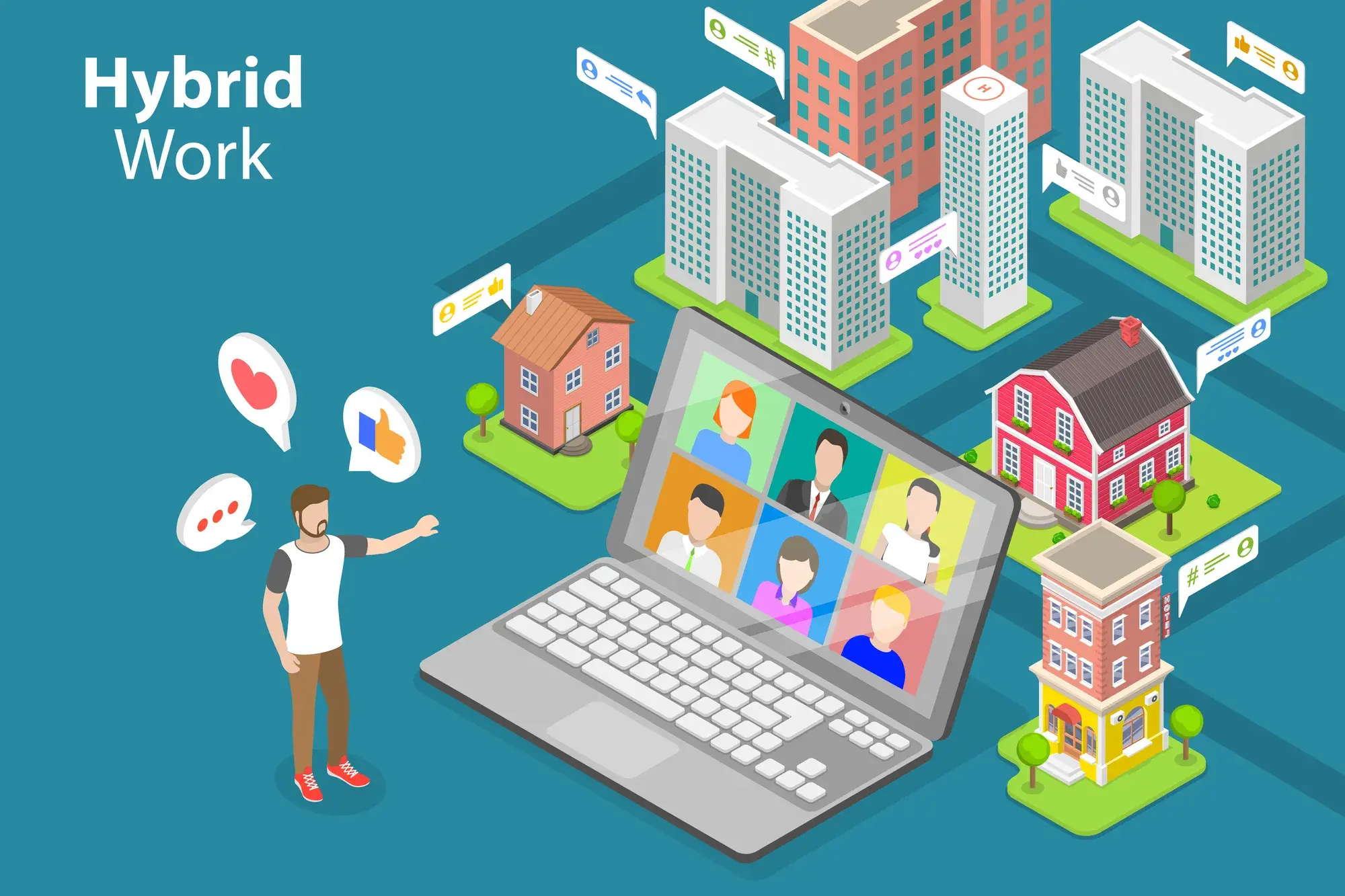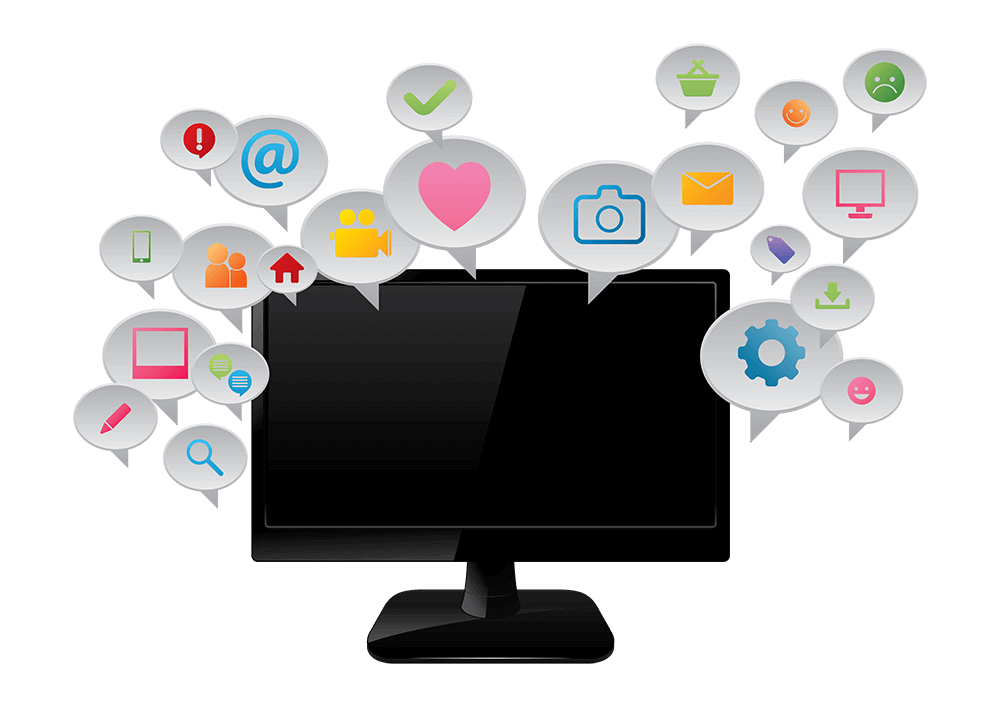November 21, 2023 |

The pandemic may have ended, but COVID-19 is here to stay. Businesses must adapt to a post-COVID workplace and implement strategies prioritizing safety, productivity, and flexibility. The following management tips and advice can help guide businesses in creating an effective post-COVID workplace strategy.
Understanding The Post-COVID Workplace Reality
The reality of the post-COVID workplace is vastly different from what we were used to before. The pandemic has disrupted traditional work dynamics, forcing businesses to rethink how they operate. This shift in the workplace environment can be overwhelming for employers and employees alike, as there are new health and safety concerns, remote work considerations, and a need for increased adaptability. As a result, acknowledging and understanding these changes is crucial in creating an effective post-COVID workplace strategy.
HR Strategies For A Post-COVID-19 Workplace
With the post-COVID workplace reality in mind, here are some HR strategies that can help businesses navigate these changes and ensure a successful transition:
- Foster open communication: As employees adjust to the new workplace dynamics, it’s essential to maintain open communication channels and encourage them to voice their concerns and suggestions. This will not only help address any potential issues but will also create a sense of support and understanding within the team.
- Provide flexibility: The pandemic has proved that remote work is a viable solution for many organizations. Offering flexible work arrangements such as hybrid schedules or remote work options can help your employees feel more comfortable and be more productive in their new workplace environment.
- Prioritize health and safety: Implementing strict health and safety protocols is crucial in creating a safe workplace for employees.
- Offer mental health support: The pandemic has taken a toll on everyone’s mental health, making it essential for businesses to offer support and resources for their employees’ well-being. This can include virtual counseling services or mental health days.
- Train and educate: With new workplace protocols in place, it’s important to provide proper training and education for employees. This will not only ensure they understand the new guidelines but also help them feel more confident and prepared in their roles.
The Role Of Leadership In A Post-COVID Workplace
In a post-COVID workplace, strong leadership is more crucial than ever. Managers and leaders must be empathetic and understanding of the challenges employees may face during this transition. This may include personal struggles, health concerns, or difficulties adapting to new work arrangements.
Flexibility is also key in effective leadership during this time. Leaders must be willing to adapt their management styles and strategies to meet the changing needs of their team. This could mean being open to remote work options, offering flexible schedules, or revisiting performance evaluations.
Ultimately, a strong and supportive leadership style will help create a positive and productive workplace environment for employees, whether they’re working on-site or remotely.
Strategies For Ensuring Employee Safety
Ensuring the safety of your employees must be a top priority in a post-COVID workplace. As businesses continue to operate amidst the threat of COVID-19, it’s crucial to have procedures in place that prioritize the health and well-being of employees. Some strategies for ensuring employee safety may include:
Implementing Health And Safety Protocols
Even though the pandemic is over, it’s vital to have strict protocols in place to mitigate the risk of COVID-19 and other future health concerns. It’s also essential to regularly communicate these protocols to employees and ensure they are followed. Some of these health and safety protocols may include:
- Regular sanitization of workspaces and high-touch areas
- Encouraging frequent handwashing and sanitization
- Giving employees who test positive for COVID-19 paid time off to quarantine and recover
- Providing masks and personal protective equipment (PPE) for employees
- Providing information on where employees can get vaccinated
Handling Fears And Anxiety About Returning To Work
It’s important to remember that despite the vaccine and the easing of restrictions, some employees may still have fears or anxiety about returning to work. It’s crucial to address these concerns and create a workplace environment that feels safe and supportive. This could include offering resources for mental health support, providing regular updates on safety protocols, and being open to flexible work arrangements.
Embracing Post-Pandemic Work Models
The pandemic accelerated the remote work trend, and it’s likely to continue long into the future. Businesses must embrace post-pandemic work models that incorporate remote work effectively. Companies that don’t adapt may struggle to attract and keep skilled employees in a competitive job market. The following are some of the new post-pandemic work models you may want to consider implementing in your organization:
Remote Work
Once seen as a temporary solution during the pandemic, remote work has now become a permanent work option for many businesses. Embracing remote work can offer numerous benefits, including increased productivity and cost savings on office space. However, it’s essential to establish clear expectations and guidelines to ensure accountability and effective communication among remote teams.
Hybrid Work
Hybrid work models allow employees to divide their time between working in the office and at home. This can offer the best of both worlds, with opportunities for collaboration and face-to-face interactions while still providing the flexibility and autonomy that remote work offers. However, managing a hybrid team effectively requires clear communication and potentially revisiting performance evaluation methods.
Gig Economy
The gig economy refers to the increasing trend of hiring freelancers and independent contractors for short-term or project-based work. This model can offer businesses flexibility in scaling their workforce based on demand, allowing individuals to have more control over their work schedules and projects. However, it’s essential for organizations to carefully consider the legal implications of hiring gig workers and ensure they are treated fairly and ethically.
Leveraging Technology In The Post-COVID Workplace
Technology played a significant role in allowing companies to adapt to the challenges of the pandemic, and it will continue to be crucial in facilitating multiple work models in the post-COVID workplace. With the rise of remote work, hybrid teams, and gig workers, technology can help bridge the gap between employees and ensure seamless communication and collaboration. Some ways technology can support these work models include:
- Communication tools: With remote and hybrid teams, effective communication is key to ensuring productivity and a sense of connection among team members. Tools that include video conferencing software, instant messaging platforms, and project management software can facilitate communication between individuals or teams regardless of their physical location.
- Virtual collaboration platforms: In a hybrid or remote work environment, it can be challenging to collaborate on projects and tasks in real time. Virtual collaboration platforms allow teams to work simultaneously on documents and provide feedback, making teamwork more efficient and effective.
- Cloud-based systems: With employees working remotely or from different locations, having cloud-based systems for storing and accessing data is crucial. This allows employees to access the information they need from anywhere, at any time, making remote work more manageable.
- Project management software: With the gig economy on the rise, project management software can help businesses efficiently manage and coordinate freelance workers. These tools can track project progress, set deadlines and milestones, and facilitate communication between team members.
Prioritizing Employee Well-Being And Mental Health
The pandemic took a huge toll on the mental health of employees, with many facing increased levels of burnout, isolation, and stress. Businesses must prioritize employee well-being and address these issues to ensure a healthy and productive workforce. This could include implementing the following strategies:
- Offering employee assistance programs (EAPs) that provide access to mental health resources and support.
- Encouraging work-life balance and setting boundaries for employees, especially those working remotely.
- Providing regular check-ins and fostering open communication between managers and employees to address any concerns or struggles.
- Promoting a supportive and inclusive workplace culture that prioritizes mental health awareness and destigmatizes seeking help.
Adapting To Legal And Policy Changes
As the workforce continues to evolve in the post-COVID era, businesses must also adapt to new labor laws and policies. These include regulations around remote work, data privacy concerns with employees working remotely or using company technology from home, and ensuring employee rights are protected regardless of their work location. A few of the steps you can take to remain compliant with these laws and policies include:
- Staying informed and regularly reviewing updates to labor laws and policies
- Setting clear guidelines and expectations for remote work, including data privacy protocols and employee rights protection measures
- Providing resources and training for employees on proper procedures for working remotely, handling sensitive data, and understanding their rights as remote or gig workers
Ready To Embrace The New Normal?
The pandemic fundamentally changed the way people work, and it’s clear that some of these changes are here to stay. Companies need to be prepared to adapt and embrace the new normal, which includes utilizing technology to facilitate different work models, prioritizing employee well-being and mental health, and staying compliant with changing labor laws and policies.
By creating a work environment that is supportive and flexible, you can ensure your employees’ success and drive business growth in the post-COVID era. It’s crucial that you carefully consider how you manage your teams and maintain productivity while also prioritizing the well-being of your employees.
At O2, we allow you to hire a team of HR professionals who specialize in all the different areas to properly manage your human resources needs, especially
employee relations and compliance
This blog post is intended for informational purposes only and does not constitute legal advice. No attorney-client relationship is created between the author and reader of this blog post, and its content should not be relied upon as legal advice. Readers are urged to consult legal counsel when seeking legal advice.








